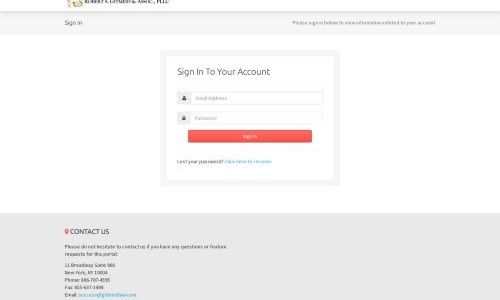The Minnesota Lemon Law is a crucial consumer protection law that protects individuals who purchase defective vehicles from manufacturers and dealers. If you’ve bought a car in Minnesota and it fails to meet reasonable quality standards, you may be entitled to a refund or replacement under the state’s Lemon Law. This article explores the ins and outs of the MN Lemon Law, including its eligibility requirements, the process for filing a claim, and what remedies you can expect.
Table of Contents
What is the MN Lemon Law?
The MN Lemon Law was enacted to protect buyers who unknowingly purchase a defective vehicle that has significant issues that cannot be repaired within a reasonable period of time. Under this law, if your vehicle has persistent mechanical problems that are not fixed after a reasonable number of repair attempts, you may be entitled to a refund or a replacement vehicle.
Eligibility for MN Lemon Law
To qualify for the MN Lemon Law, your vehicle must meet certain criteria. These include:
- The vehicle must have a serious defect that affects its safety, value, or use.
- The defect must have been reported to the manufacturer or dealer within a reasonable period.
- The vehicle must have undergone a reasonable number of repair attempts without success.
- The vehicle must still be within the warranty period or first year of ownership, or have been driven for fewer than 12,000 miles.
If the vehicle meets these conditions, it may be considered a “lemon” under Minnesota law.
Understanding the Process
Step 1: Identifying the Problem
Before you can file a claim under the MN Lemon Law, it’s essential to identify and document the defect. If your vehicle has a recurring issue that cannot be repaired, keep a detailed record of:
- The dates and mileage of each repair attempt.
- The nature of the defect and any documentation or service records from the repair shop.
- Communication with the dealer or manufacturer.
The more evidence you can provide, the better your chances of a successful claim.
Step 2: The Repair Attempts
The MN Lemon Law stipulates that if a serious defect exists, the manufacturer or dealer must have an opportunity to repair it. Typically, a defect is deemed “serious” if it substantially impairs the vehicle’s use, safety, or value.
In Minnesota, the law typically allows the following repair attempts:
- Three repair attempts for the same defect, or
- 30 days in the shop for repairs over the course of a single year.
If the dealer or manufacturer cannot fix the issue after these attempts, you may proceed with filing a claim under the MN Lemon Law.
Step 3: File a Claim
Once you have enough documentation and repair attempts have failed, you can file a Lemon Law claim with the manufacturer. The manufacturer has a specific time frame to respond (usually within 30 days).
You may also seek the assistance of the Minnesota Attorney General’s Office, or you can file a civil lawsuit if necessary.
Step 4: Outcome and Remedies
If your vehicle qualifies under the MN Lemon Law, you can receive either:
- A full refund for the purchase price, including taxes and fees, minus a reasonable amount for usage.
- A replacement vehicle of similar make and model.
In some cases, you may be entitled to compensation for your out-of-pocket expenses incurred while dealing with the vehicle’s defects.
Step 5: Arbitration
If you and the manufacturer cannot reach an agreement, the MN Lemon Law offers arbitration as a potential resolution method. Arbitration is a less formal process where an independent third party reviews the evidence and makes a binding decision.
Common Defects Under MN Lemon Law
Several defects may qualify for a Lemon Law claim. Some of the most common issues include:
- Engine problems that prevent the vehicle from operating properly.
- Transmission issues that cause the car to shift erratically.
- Brake failure or issues affecting the safety of the vehicle.
- Electrical malfunctions that interfere with the functioning of critical components.
- Faulty air conditioning or heating systems that cannot be repaired after multiple attempts.
Frequently Asked Questions
- What Should I Do If My Vehicle is a Lemon?
If you believe your vehicle is a lemon, begin by documenting all issues and repair attempts. Contact the dealer or manufacturer to report the defects and give them a chance to fix the issue. If the problem persists after several attempts, consider filing a claim under the MN Lemon Law.
- Does the MN Lemon Law Cover Used Cars?
Yes, the MN Lemon Law applies to both new and used cars, but the defects must meet the same criteria as those for new vehicles. Additionally, the car must be purchased from a licensed dealer and still be covered under the original warranty.
- How Long Do I Have to File a Lemon Law Claim?
You must file your Lemon Law claim within one year from the vehicle’s delivery date or 12,000 miles, whichever comes first. However, it is always advisable to act promptly to preserve your rights.
- Do I Need an Attorney for a Lemon Law Claim?
While it is not always necessary to hire an attorney for a MN Lemon Law claim, having legal representation can improve your chances of a successful outcome, especially if the manufacturer is uncooperative. An attorney can help you navigate the process, including arbitration or filing a lawsuit.
Conclusion
The Minnesota Lemon Law is designed to provide a safety net for consumers who purchase defective vehicles. If your vehicle exhibits persistent and serious issues that cannot be fixed despite several repair attempts, you may be entitled to a refund or replacement. By understanding the eligibility requirements, the repair process, and your rights under the law, you can take steps to resolve the issue and get the compensation you deserve.
If you believe you have a lemon on your hands, be sure to act quickly, document everything, and seek assistance from a legal professional if necessary. The MN Lemon Law offers a critical protection that ensures consumers are not stuck with defective vehicles, providing a fair path toward resolution.




